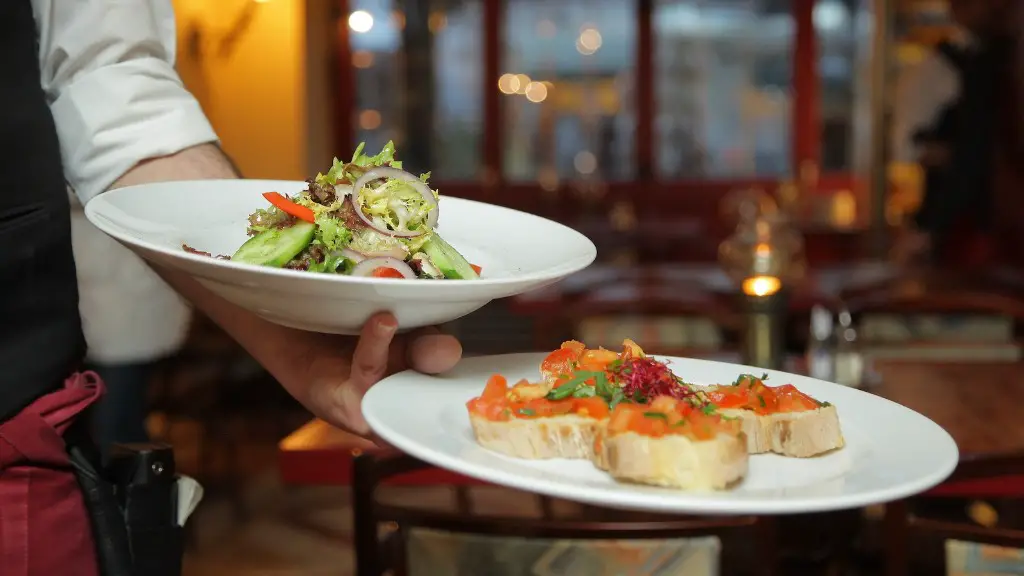If you’re thinking about opening a restaurant, there are a few things you’ll need to take care of first. First, you’ll need to choose a concept for your restaurant and design a menu. You’ll also need to find a prime location and secure the necessary permits and licenses. Of course, you’ll also need a solid business plan and the capital to get your restaurant up and running. But with careful planning and execution, opening a restaurant can be a rewarding experience.
In order to open a restaurant, you will need to obtain a few key things. First, you will need to secure a location for your restaurant. This can be either purchasing or leasing a space. Once you have a location, you will need to obtain the appropriate licenses and permits from your local government. These licenses and permits will vary depending on your specific location and type of restaurant. Next, you will need to purchase or lease all of the necessary restaurant equipment. Finally, you will need to hire staff for your restaurant. Once you have all of these things in place, you will be ready to open your restaurant!
What is needed to open a restaurant in Ohio?
If you’re planning on opening a restaurant in Ohio, you’ll need to obtain several licenses and permits before you can get started. You’ll need a business license, a certificate of occupancy, and a food handler’s license (also known as a food service license). You’ll also need a seller’s permit and a liquor license permit if you plan on serving alcohol. Finally, you’ll need a food facility health permit and a building health permit from the city or county where your restaurant is located.
The cost of starting a restaurant can vary widely, from $175,500 to $750,000. If the high startup costs feel overwhelming, don’t get discouraged. There are ways to reduce these costs, like the ghost kitchen method.
What all is needed to open a restaurant in Florida
Opening a restaurant in Florida requires more than just a plan review. You will also need to apply for a restaurant license, a liquor license (if the restaurant will serve alcohol), and standard business paperwork such as a sales tax registration and a final, pre-opening safety inspection.
Opening a restaurant can be a daunting task, but with a little planning and preparation, it can be a smooth and exciting process. Here is a checklist of things to do when starting a restaurant:
1. Define your restaurant concept. What kind of food will you serve? What is the atmosphere of your restaurant? What is your target market?
2. Create a business plan for your restaurant. This should include your financial goals, marketing strategy, and operations plan.
3. Research funding options for your restaurant. This may include loans, grants, or investment capital.
4. Obtain licenses and permits needed to open a restaurant. These will vary depending on your location and type of business.
5. Register your business. This will ensure that your business is legal and compliant with all regulations.
6. Select the right location. Consider factors such as foot traffic, parking, and zoning restrictions.
7. Order restaurant equipment. This may include commercial kitchen appliances, dining room furniture, and smallwares.
8. Hire the right staff. This includes finding qualified cooks, servers, dishwashers, and front-of-house personnel.
How much is a food license in Ohio?
A food service license in Ohio costs $15 or less. This is to make sure that anyone working in a restaurant can afford to get certified.
There is a wide range of salaries for restaurant owners, according to Payscale.com and Chron.com. Salaries can range from $31,000 to $155,000 per year, with a national average of around $65,000 per year. These estimates vary somewhat, but both sources agree that there is a wide range of possible salaries for restaurant owners.
Can you start a small restaurant with 10000 dollars?
Ghost kitchens are a new type of food service business that doesn’t have a physical restaurant location. Instead, they prepare and deliver meals from a central kitchen space.
Startup costs for a ghost kitchen can range from $10,000 to $50,000, depending on the size and location of the kitchen space. Some cities have local providers that offer options below $10,000.
ghost kitchens have several advantages over traditional restaurants. They’re typically less expensive to open and run, and they can be located in areas with lower rents. They also have the potential to reach a wider customer base through online ordering and delivery platforms.
If you’re thinking about starting a ghost kitchen, be sure to do your research and understand the costs involved. You’ll also need to have a solid business plan in place to make your business successful.
As of 28 days before a restaurant’s planned opening, the business must be registered with the local authority. Registration is free and cannot be refused. This is to ensure that the food-related business is up to standard and is safe for customers.
Do restaurant owners make a lot of money
First and foremost, it’s important to understand that the salary ranges for restaurant owners can vary greatly depending on a number of factors. For instance, location, size, menu offerings, and amenities can all play a role in how much an owner can expect to earn each year.
With that said, on average, restaurant owners can see salaries that range from $33,000 to $155,000 annually. Again, this is a broad range, but it gives you an idea of the potential earnings for those in this field. If you’re looking to become a restaurant owner, it’s important to do your research to ensure that you have a realistic expectation of what you can earn.
The cost of a food service license in Florida is capped at $15 by state law. This low cost is designed to make sure that anyone working in a restaurant can afford to get certified. Having a food service license demonstrates that the holder has the knowledge and skills necessary to safely prepare and serve food.
How profitable is a small restaurant?
While profit margins for restaurants can vary widely, the average profit margin usually falls between 3 and 5 percent. This means that for every dollar made in sales, the average restaurant typically only keeps 3 to 5 cents in profit. Although this may seem like a small amount, it is actually quite typical for businesses in the service industry.
The Florida Department of Agriculture and Consumer Services (DOACS) requires any facility manufacturing, processing, packing, holding or preparing food, or selling food at wholesale or retail in Florida must have an annual food permit. Food permit applications are available on the DOACS website. The application must be accompanied by the appropriate fee, as specified in the application.
Is it hard to open up a restaurant
The decision to open a restaurant is not one to be taken lightly. There are many factors to consider, from the cost of rent and equipment to the menu and staff. The process can be daunting, even to the most experienced entrepreneurs.
However, opening a restaurant can also be an extremely rewarding experience. Seeing your vision come to life and knowing that you are providing a service that people enjoy is a feeling that is hard to replicated in other industries.
If you are thinking about opening a restaurant, do your research and make sure you are prepared for the challenge. It is not an easy undertaking, but it can be an incredibly rewarding one.
Running a restaurant is hard work. It’s often because they’re ignoring one or many of the signs a restaurant is failing, or they’re making a variety of mistakes.
What not to do when opening a restaurant?
When opening a restaurant, it is important to avoid common mistakes that can lead to failure. One mistake is not having enough capital. This can be solved by diligent budgeting and careful planning. Another mistake is having a complicated menu. This can be solved by offering a smaller, but more delicious, menu. Other mistakes include forgetting about licenses, not training staff, and ignoring data. A social media strategy is also important. Without a clear concept, a restaurant is likely to fail.
If you’re thinking of selling homemade food in Ohio, there’s good news—it’s fairly simple to get started. You don’t need any permits, and there’s no limit on how much money you can make each year. Just make sure your food is safe and correctly labeled, and you’re good to go!
How do I get my kitchen certified in Ohio
In a home bakery inspection, the inspector will check to make sure that the bakery is clean and free of contaminants. They will also check to make sure that all food preparation areas are properly sanitized. The inspector will also check to make sure that the bakery is in compliance with all state and local food safety regulations.
Ohio Department of Health rule 3701-21-25 requires at least one person on every shift to have Person-in-Charge (PIC, formerly “Level One”) Certification in Food Protection. Make sure you look for Ohio-specific training when choosing a course, as some counties require food handler training for all food workers.
Final Words
To open a restaurant, you will need a few things:
1. A space to lease or buy. This space should have a kitchen that meets your needs, as well as enough room for dining and restrooms.
2. Commercial kitchen equipment. This includes items like ovens, stoves, dishwashers, and refrigeration units.
3. Furniture and decor for the dining area.
4. Smallwares like dishes, utensils, and glassware.
5. A robust POS system.
6. Insurance.
7. Money to cover startup costs and initial inventory.
To open a restaurant, you will need a place to cook and serve the food, utensils, a menu, and staff. You will also need to obtain a business license and a food license from your local government. Once you have these things in place, you will be ready to open your restaurant!





